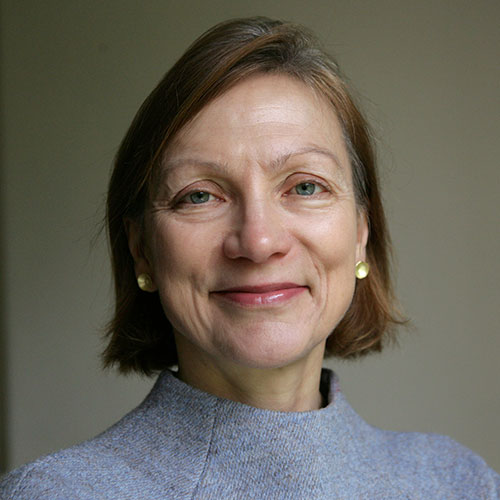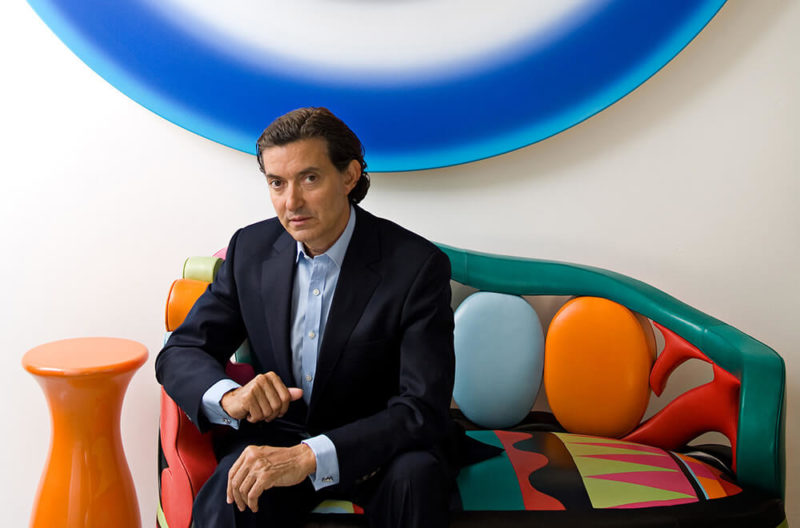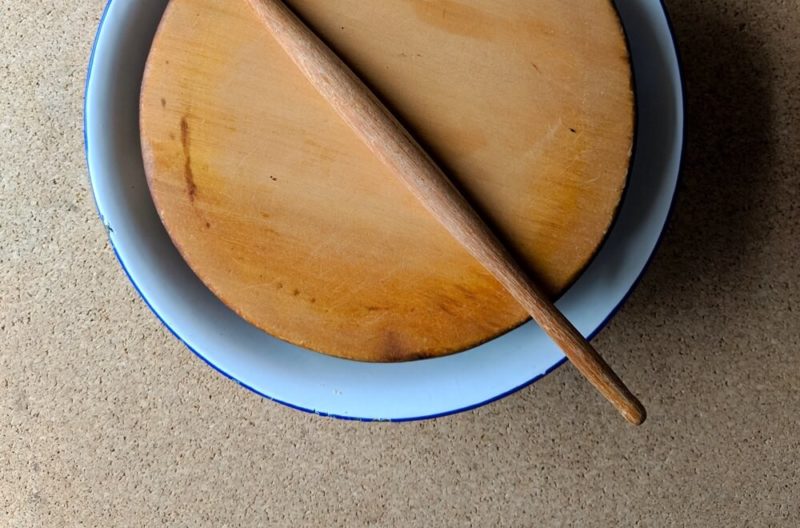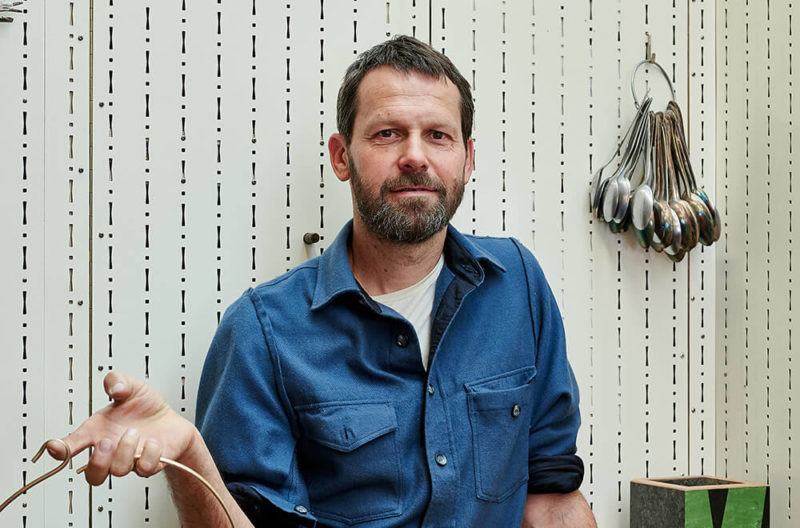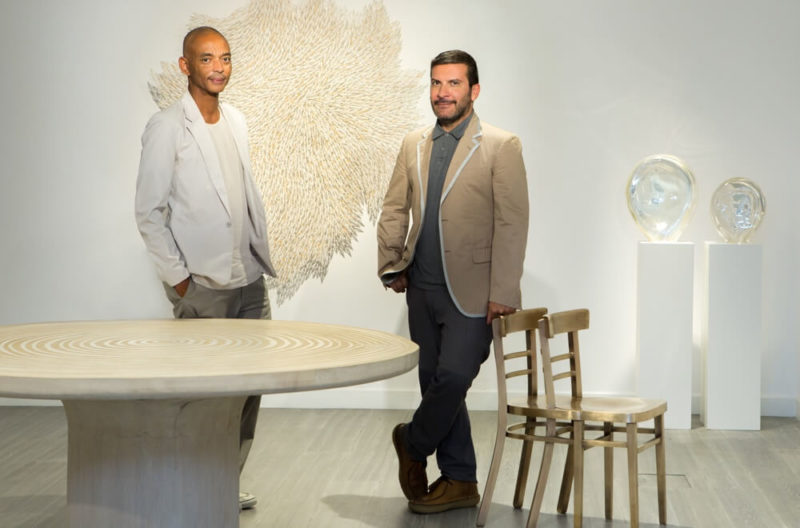Tim Jefferies
The Design Edit meets the Director of Hamiltons Gallery in his gallery office – the inspiration behind his renowned art-fair booths.
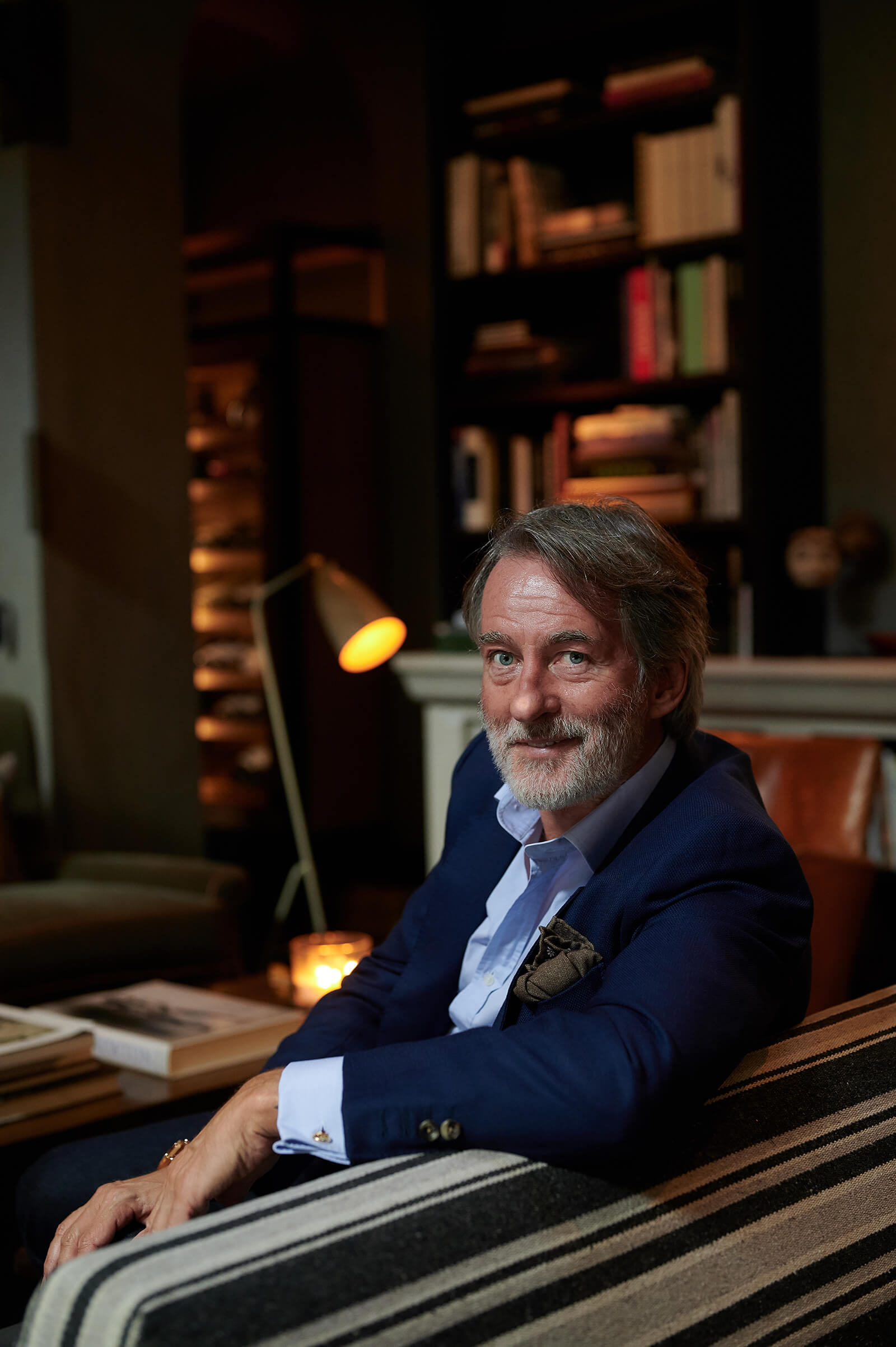
Tim Jefferies
PHOTOGRAPH: Sarah Weal
TIM JEFFERIES, DIRECTOR of Hamiltons Gallery, based in Mayfair, is one of the world’s leading dealers in the Modern Masters of photography. He represents the estates of grand twentieth century luminaries such as Richard Avedon, Horst P. Horst, Irving Penn and Helmut Newton. He shows significant Japanese photographers such as Hiro, Tomio Seike, Daido Moriyama and the controversial Nobuyoshi Araki, and also international masters such as Herb Ritts, Erwin Olaf and the South African Roger Ballen. This month he opened ‘Mario Testino: East’, which runs until 18th January 2020. Jefferies is renowned for his elegant and elaborate stands at art fairs, and a feeling for design reflected in his gallery office, where The Design Edit met him. Here we discussed the place of collectible design in his life.
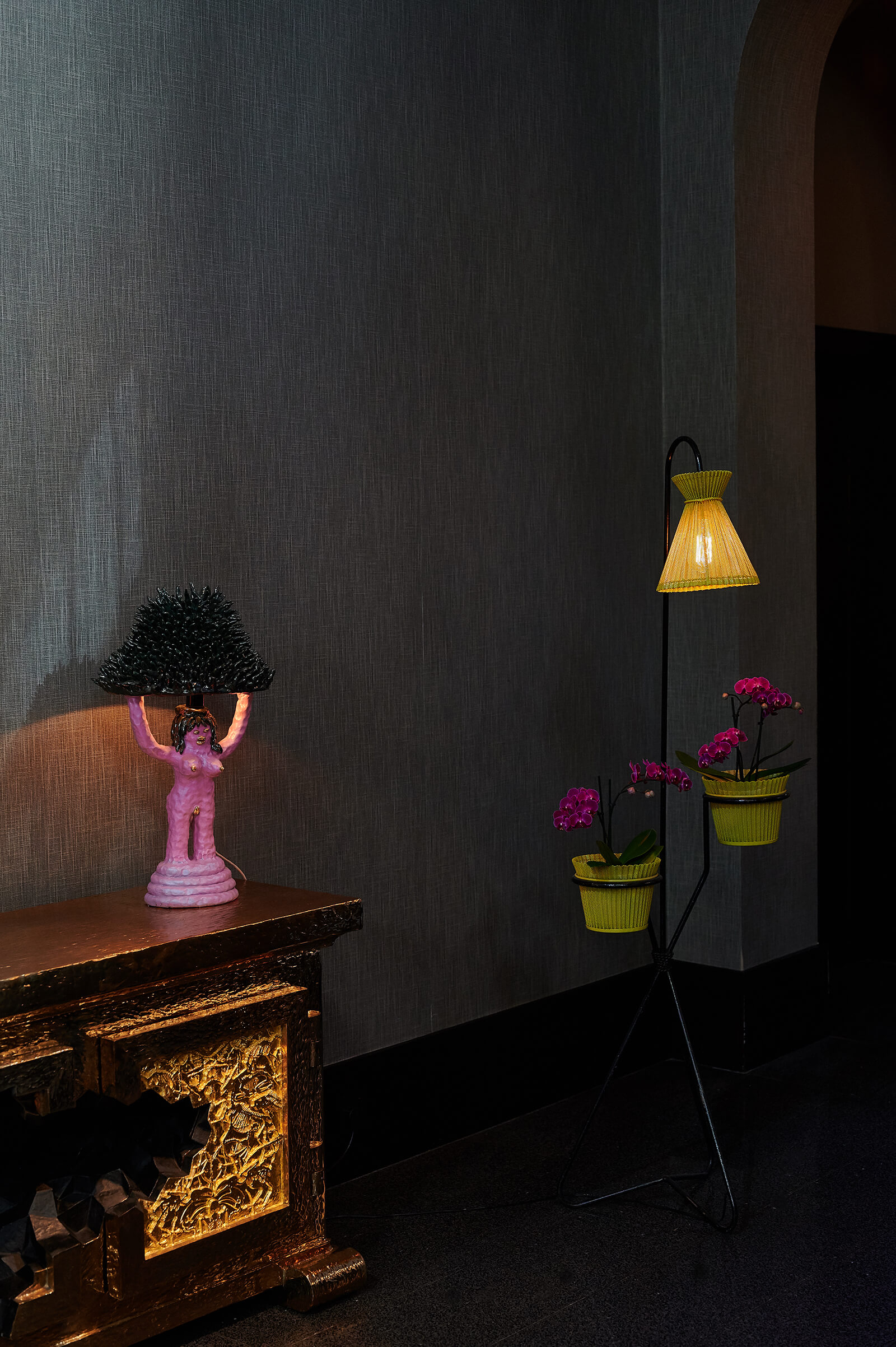
Katie Stout, ‘Girl Lamp’, 2017; Mathieu Mategot, ‘Floor lamp plant holder’, 1953
PHOTOGRAPH: Sarah Weal
When did you start to collect?
I would not describe myself necessarily as a collector. I think the term is quite often misapplied. In my field, collectors are people who have a complete compulsion to buy and add to whatever it is that they collect. With my clients, this is photographs. They own far more than they could ever show, hang or display. They have storage facilities and warehouses full of stuff. For me, that is the real definition of a collector. It is a sickness in a way. Then, I think you have people more along the lines of myself, or some of my other clients, whom I would term ‘decorators’. They have a space and they want to decorate that space and when the space is decorated they don’t buy anymore, until they have another space. So with design and objects that is pretty much the way it works with me, unless of course I see something extraordinarily surprising … so at PAD this year in October I bought a couple of wall sconces from Adrian Sassoon, made by the London-based design duo, Vezzini & Chen, that I thought were absolutely beautiful – but I haven’t got a clue where I am going to put them. That was a complete knee-jerk reaction to something I thought was really great.
Where did your interest in design start?
My interest in design is born out of my having been in the art world for thirty-five years – from having been exposed to clients’ homes and collections and taste, from travelling and visiting art fairs and from having an interest in looking at things, whether it be paintings, or photographs, or lamps, or cars, or chairs, or bikes. My best friend is a Swede who lived in Sweden in the late eighties, so I spent a lot of time in Stockholm and was drawn to Scandinavian taste. These chairs, for instance, are great. They are Swedish, by Axel Einar Hjorth [1888-1959]. They are made out of pine, which is not an expensive wood, and they were produced in quite large numbers for the purpose of decorating summer houses in the archipelago. They were conceived as cheap furniture, but have now become quite collectible and expensive. And what happened is that they got bashed about, many got broken up and used for firewood, and so they have become rare. I like the fact that this rather simple, utilitarian design has got something special. They are super comfortable too.
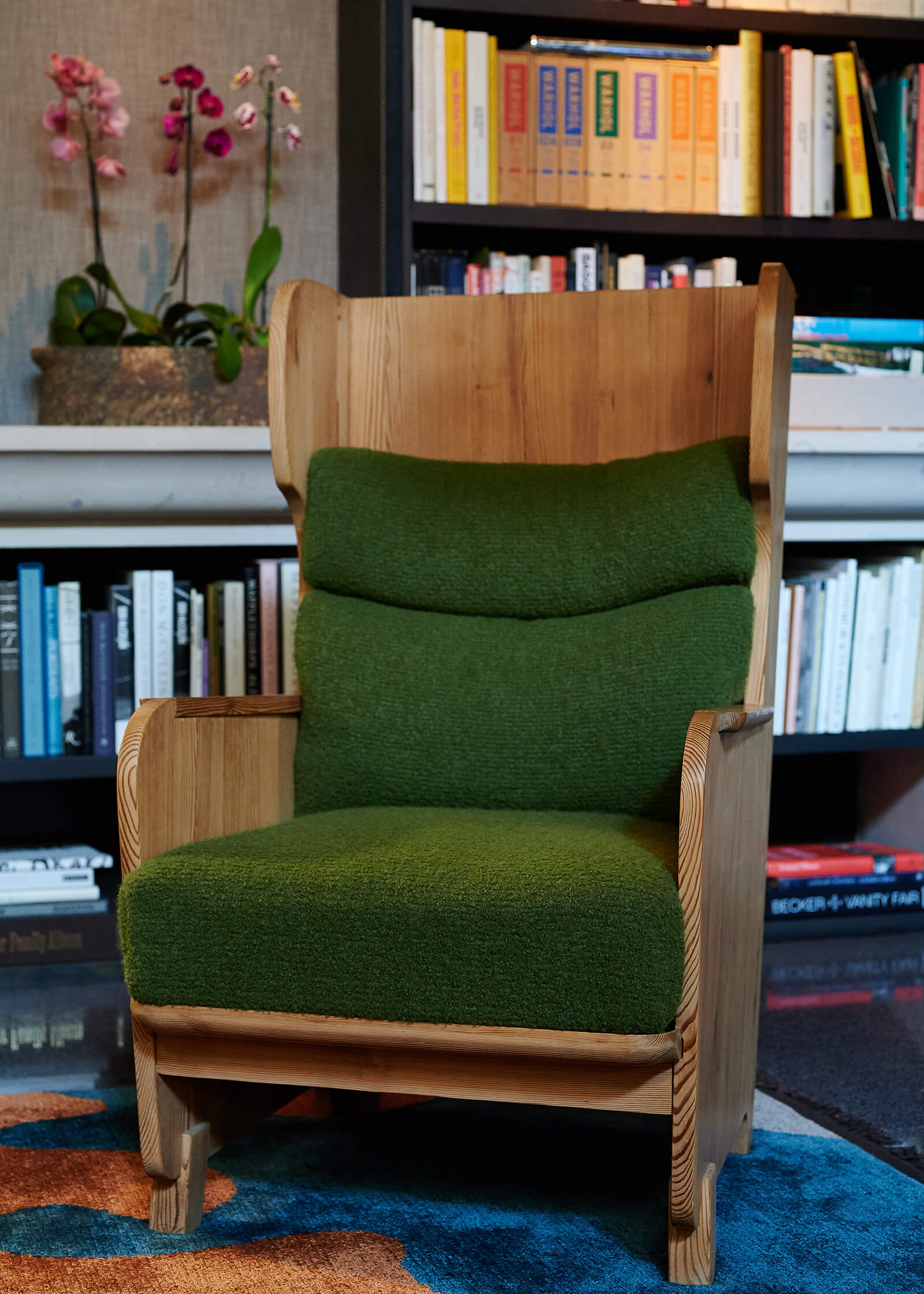
Axel Einar Hjorth, ‘High back armchair’, circa 1930
PHOTOGRAPH: Sarah Weal
When did you come across this notion of collectible design?
There are a few friends of mine whose taste is not necessarily mine but whose eye and whose enthusiasm for collecting informed me. I am great friends with the designer Valentino and he has extraordinary homes and objects. Being exposed as a young man to his opulence and refined taste, made a very big impression and piqued my curiosity. So whichever city I am in, if I have half an hour to spare I will ask, where are the good design galleries?
Which was the first significant piece of design you bought?
I cannot remember what the first significant piece of design I bought was, it must have been something in Stockholm. Märta Måås-Fjetterström [1873-1941] was a designer who designed and wove beautiful carpets, in a town on the south west coast of Sweden, called Båstad. It is a favourite summer holiday destination for many Swedes. Spending summers there, I was able to learn more about Märta Måås-Fjetterström and I began collecting her carpets. There is an exhibition in Stockholm at the palace this year, to celebrate the centenary of Måås-Fjetterström’s company, because the Swedish Royal Family also collect these carpets. I shall be going.
What have you bought for this room, and why?
The room was built by the Courtauld family sometime in the 1920s. It was a music room, built at the back of a garden, which ran all the way up to a property on South Audley Street, which has since been demolished. It is a great space – quite unexpected when you come off Carlos Place and walk through and come in here. It was the main exhibition space, but I wanted to create an environment where I could show important photographs, or indeed important paintings, more in the context of how people live. Most people don’t live in a white box with a concrete floor. And I think it is important to see how objects, photographs, and paintings sit in a room with furniture and objects.
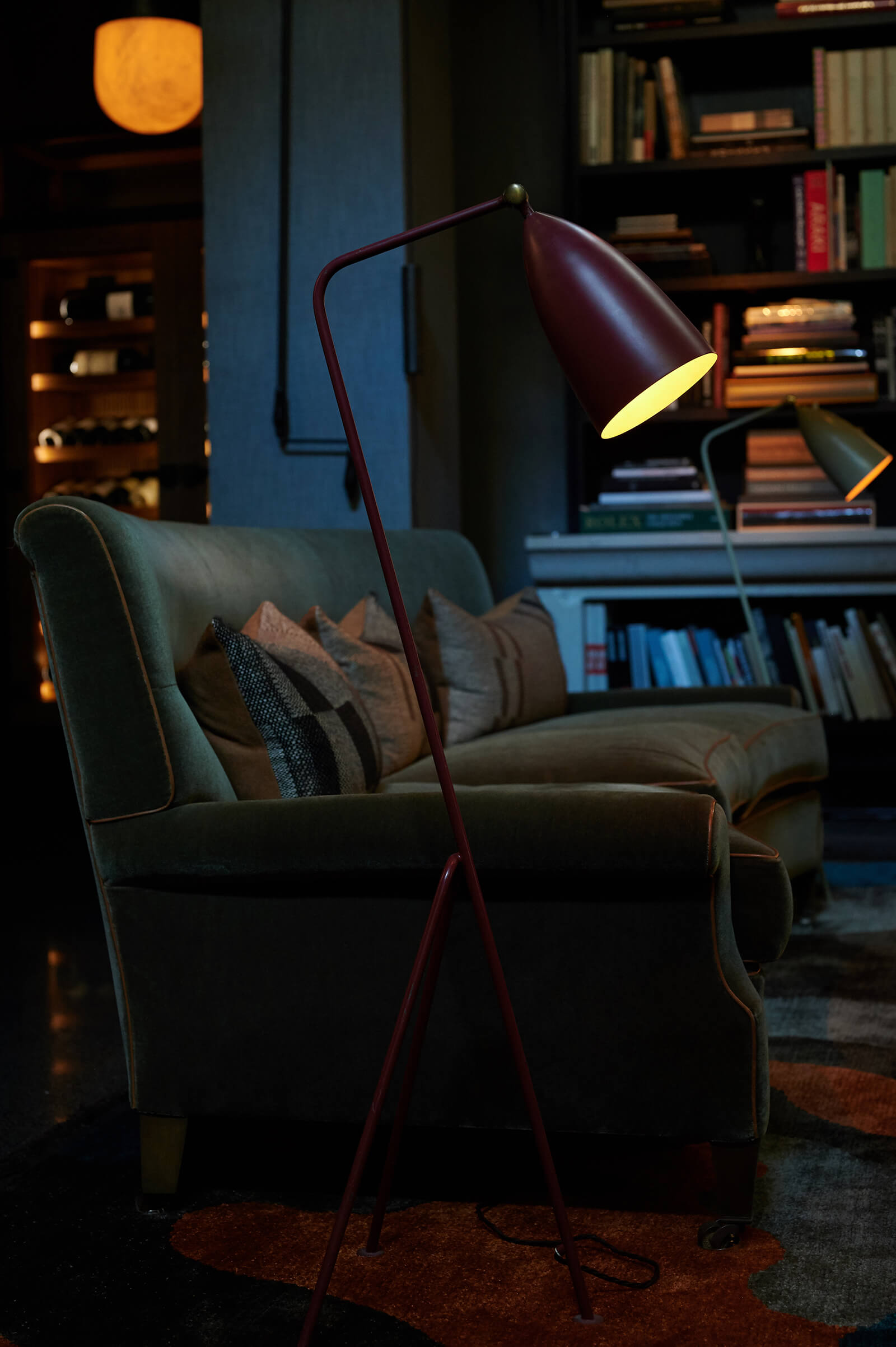
Greta Magnusson-Grossman, ‘Grasshopper floor lamp model 831’, circa 1950s
PHOTOGRAPH: Sarah Weal
This is my taste but I worked with my dear friend, the interior designer, Jonathan Reed, who helped me put it all together. It’s a seductively comfortable environment in which everything on the walls really sings. Some things were made specifically for the room – the sofa and the dining table for instance – but other things were bought. The grasshopper lamps are by Greta Magnusson Grossman [1906-1999], again, Swedish.
What about the large overhead lights?
These lights I designed and had made, they actually don’t give off very much light, they are not very practical in that regard, but what they do, when you are sitting on the sofa, is slightly reduce the openness of the room, so it is really quite cosy there. In the evening, in particular, this room is really gorgeous and the lights give off this nice glow. They swivel this way and that. They look kind of industrial.
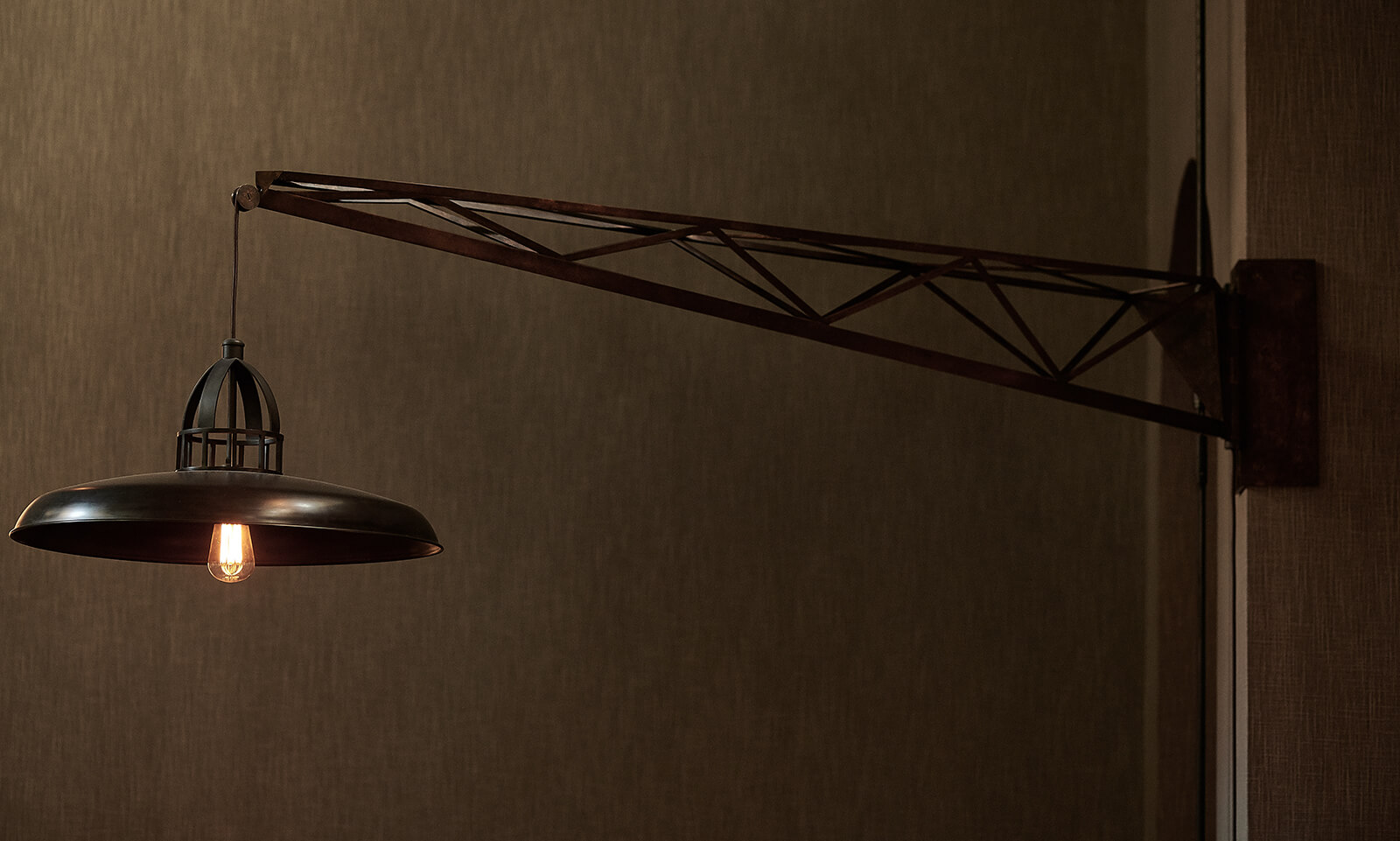
Custom-made rise and fall lamp
PHOTOGRAPH: Sarah Weal
How important was your participation at PAD to your collecting?
I did PAD for a decade. At the beginning they had some good painting dealers and some good photography dealers. Photography was well represented. You had this extraordinary environment there in Berkeley Square, fifty galleries, very beautifully curated, beautifully lit, in the centre of the most important part of London. It was intimate, it was small, and you could get around the fair very quickly if you wanted to – or you could amble around – but you didn’t get art fair anxiety. It was a very seductive environment and we always did very ambitious booths there. We really pushed the boat out. Those booths in PAD were born out of the idea of this office. It was transposing the feel of this environment to an art fair.
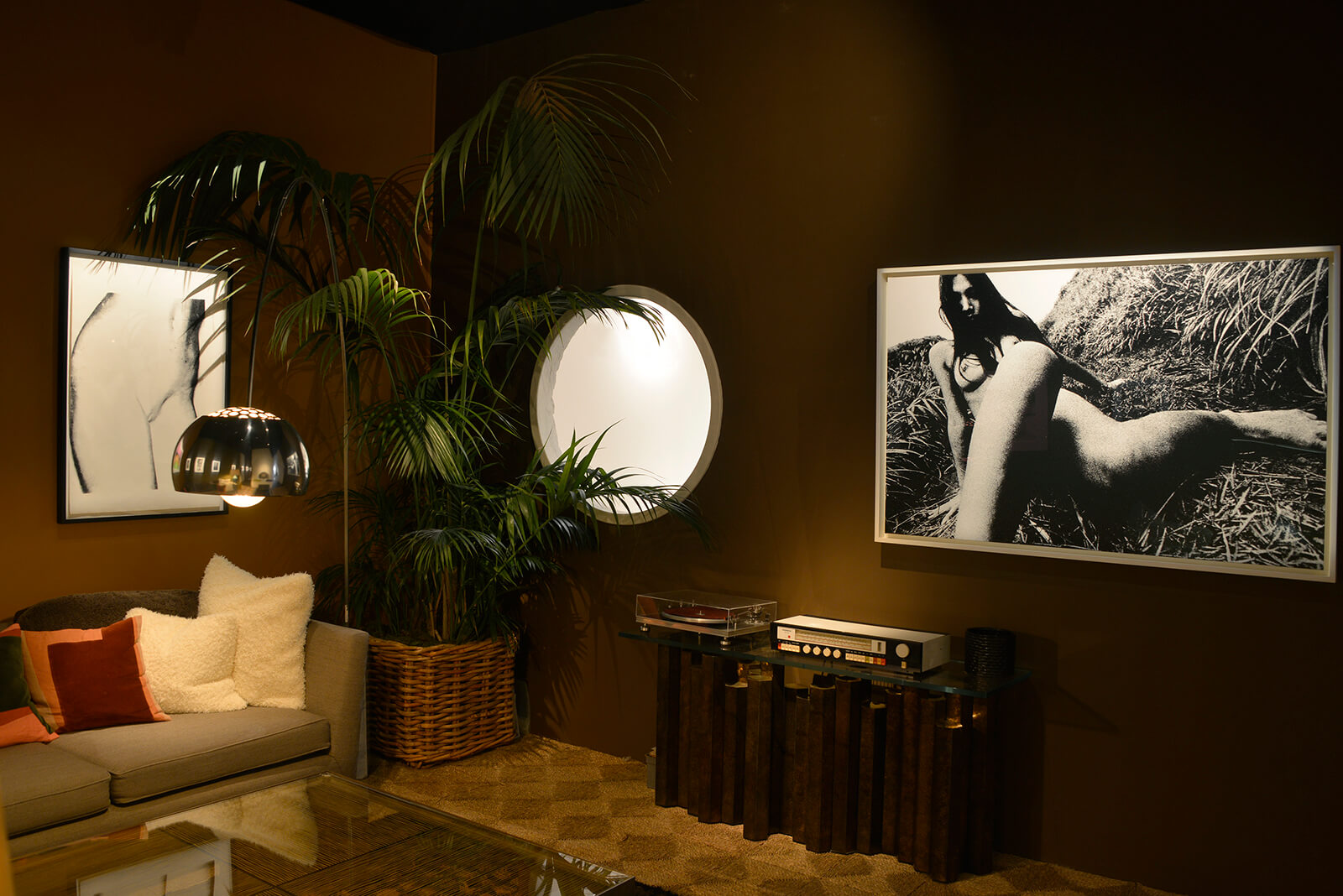
Installation image of the Hamiltons stand, PAD 2015
PHOTOGRAPH: Tim Jefferies
PAD gave me the opportunity to exercise my creativity in terms of how to show art. I believe I was among the first art dealers to create these very specific environments. One stand in particular at ‘Masterpiece’ was sensational, when we won the best stand. No photography dealer in the world does this and very few painting dealers create these total environments.
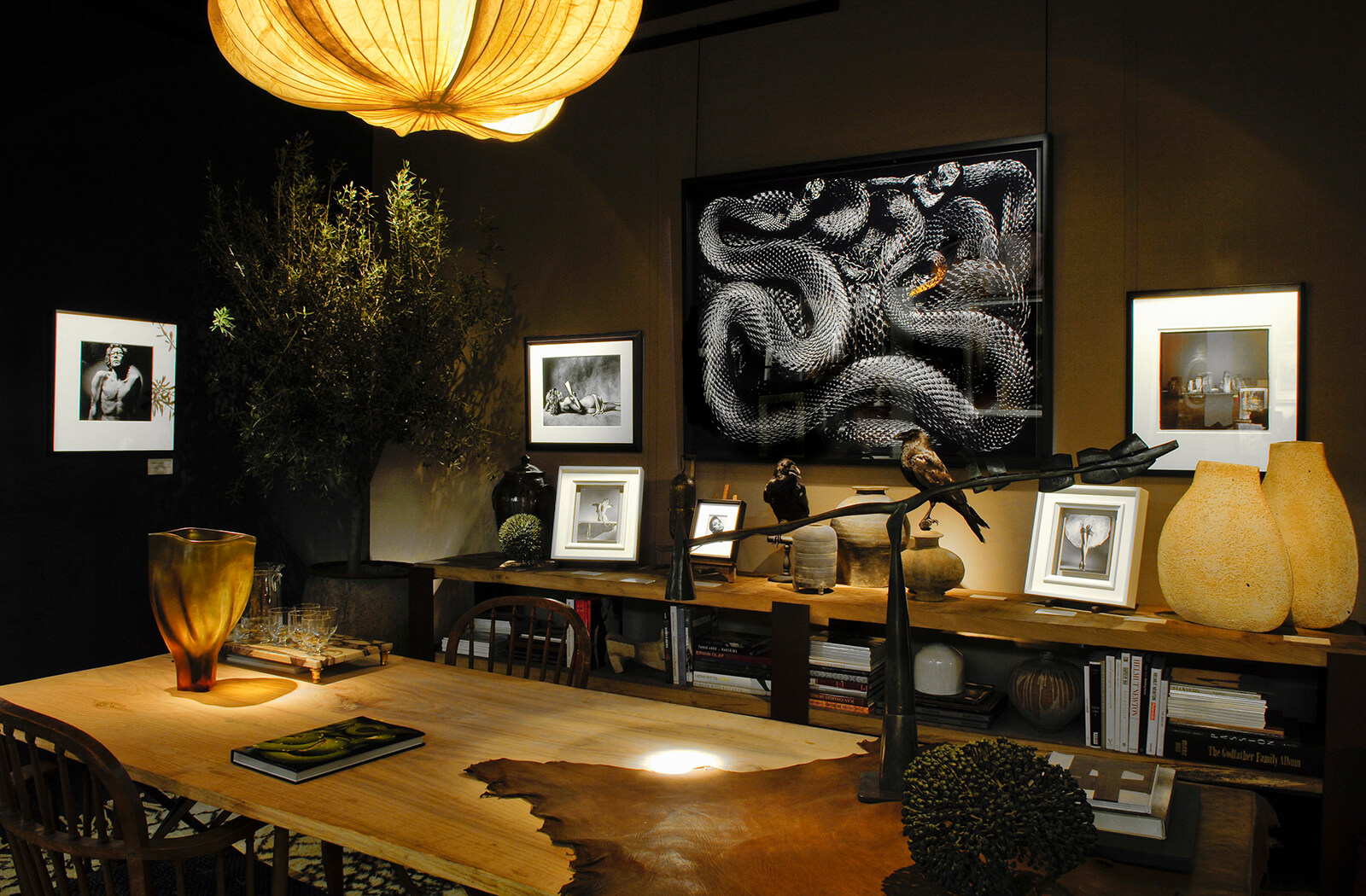
Installation image of the Hamiltons stand, Masterpiece 2011
PHOTOGRAPH: Tim Jefferies
And then I bought things at PAD from those dealers. I really love this lamp by Mathieu Matego [1910-2001], with the little flower baskets on it. It is fifties, bronze, French, delicate and charming – and next to it is that crazy Katie Stout lamp which I bought at Design Miami Basel a couple of years ago. It is funny and cheeky and I like it because it would be easy to be extremely austere in this environment.
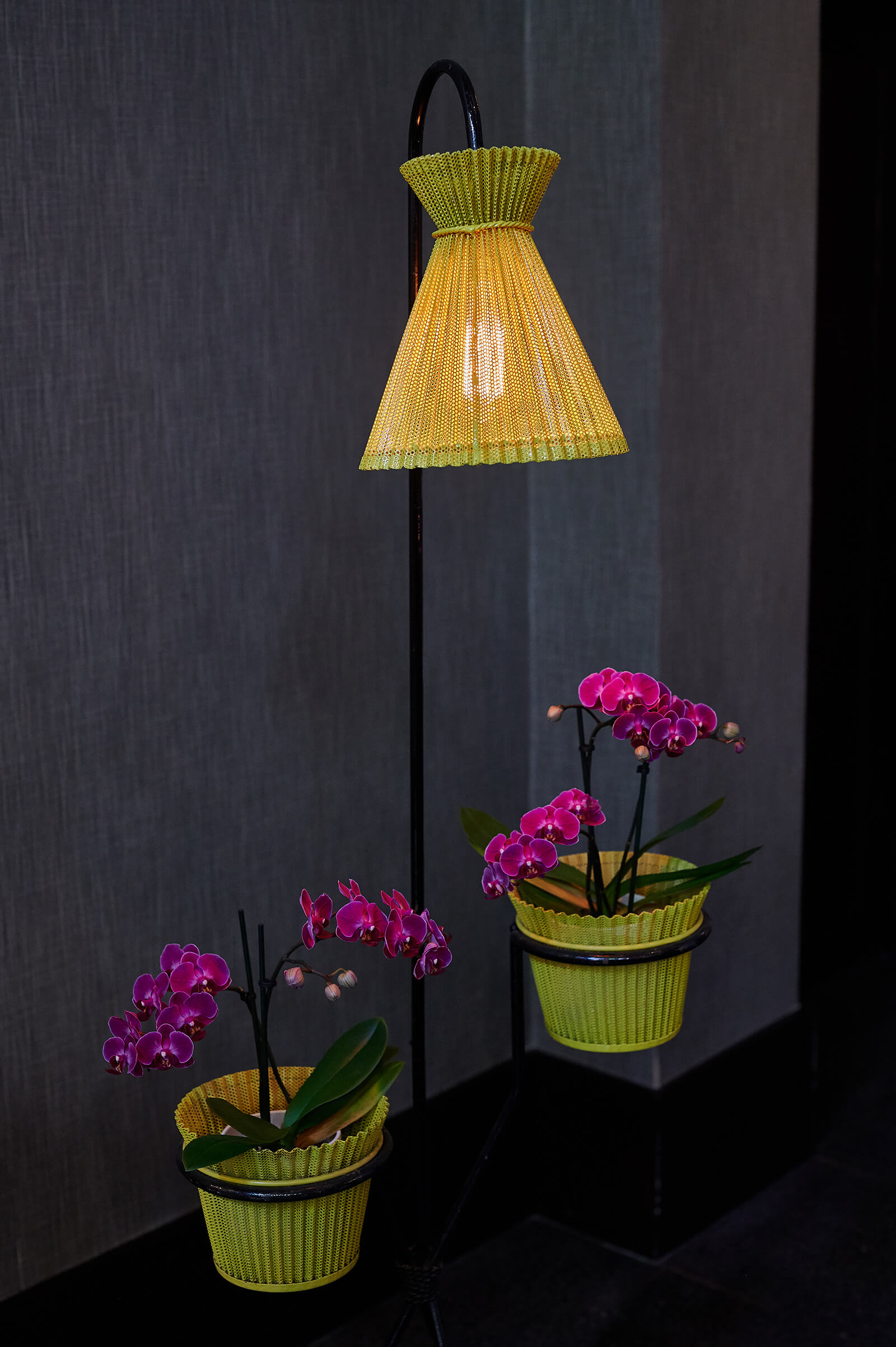
Mathieu Mategot, ‘Floor lamp plant holder’, 1953
PHOTOGRAPH: Sarah Weal
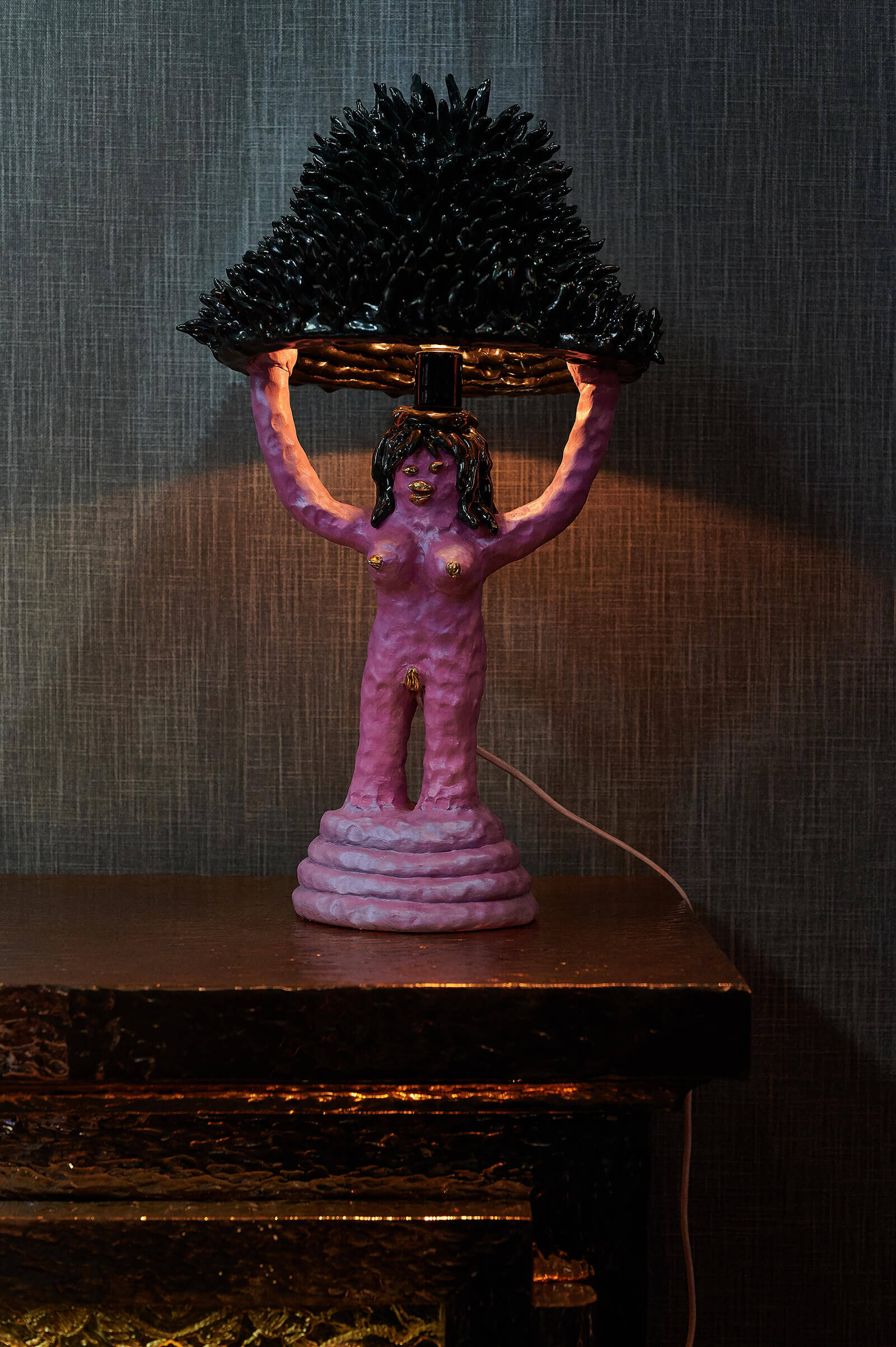
Katie Stout, ‘Girl Lamp’, 2017
PHOTOGRAPH: Sarah Weal
Tell me about the great black buffet …
I commissioned the buffet below the Helmut Newton photograph from Studio Job. The wall is huge and looked unfinished and empty, and I wanted to have some crazy piece of furniture that would anchor the space and help to create a focal point in the room. Job had made something that looked like an old safe from a bank, with its centre blown out, called the ‘Robber Baron Jewel Safe’. I liked the way you have this exposed area which looks like coal – so for this piece I wanted something that looked extravagant and slightly mad, and that gold glow, in the evening, looks just gorgeous.
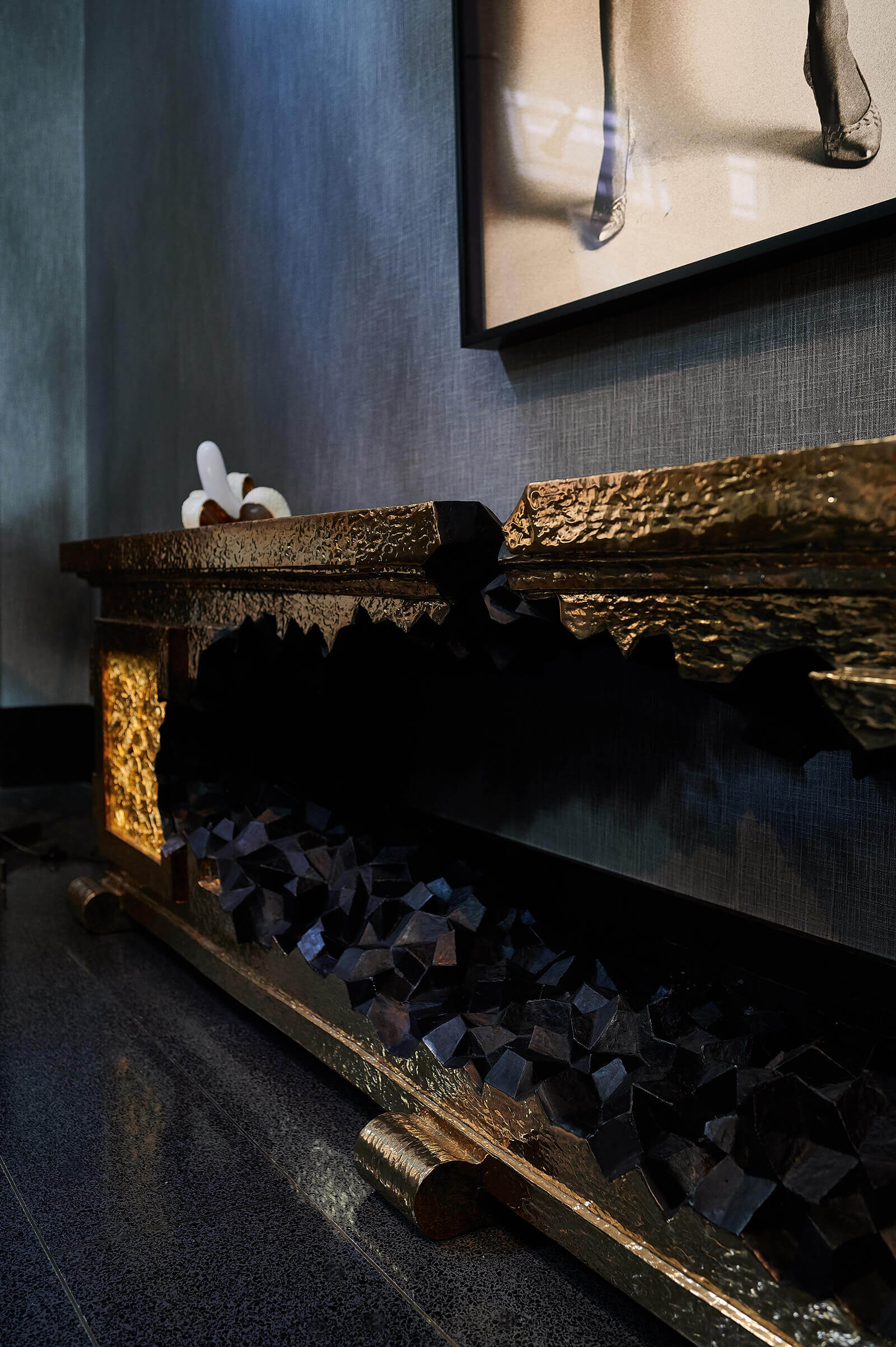
Studio Job, ‘Robber Baron Buffet’, 2013
PHOTOGRAPH: Sarah Weal
It does serve a purpose too! Either end you have a shelf space. Job Smeets was fantastic to work with. I have one or two other bits and pieces of his – the ‘Eiffel Tower Lamp’ and the black cat over there on the floor. This piece was so successful in terms of how it was realised that he asked if he could edition it, so I think he has made five or six of them.
How about those chairs?
The chairs are by Zhoujie Zhang. I bought these at Design Miami Basel in 2018: as you walked in, there was a display of fifty of these on the right hand side. They are hard-looking, but surprisingly comfortable to sit in, and I like them because they are little unexpected in this environment. Everything else is softer and older, and I quite like these edgy stealth-bomber like chairs.
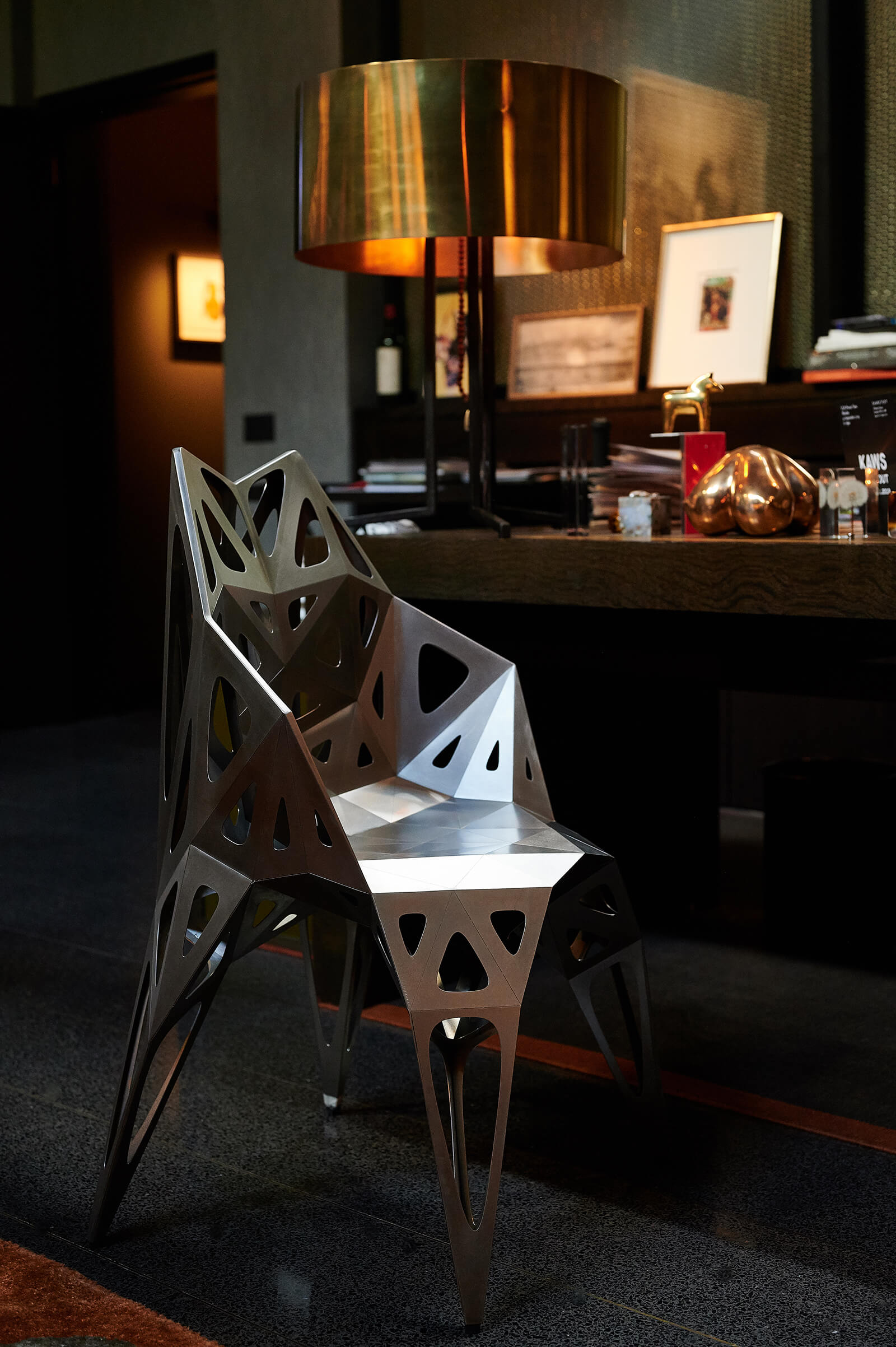
Zhoujie Zhang, ‘MC011-F-Matt’, 2018
PHOTOGRAPH: Sarah Weal
“These edgy stealth-bomber like chairs are hard-looking, but surprisingly comfortable to sit in …”
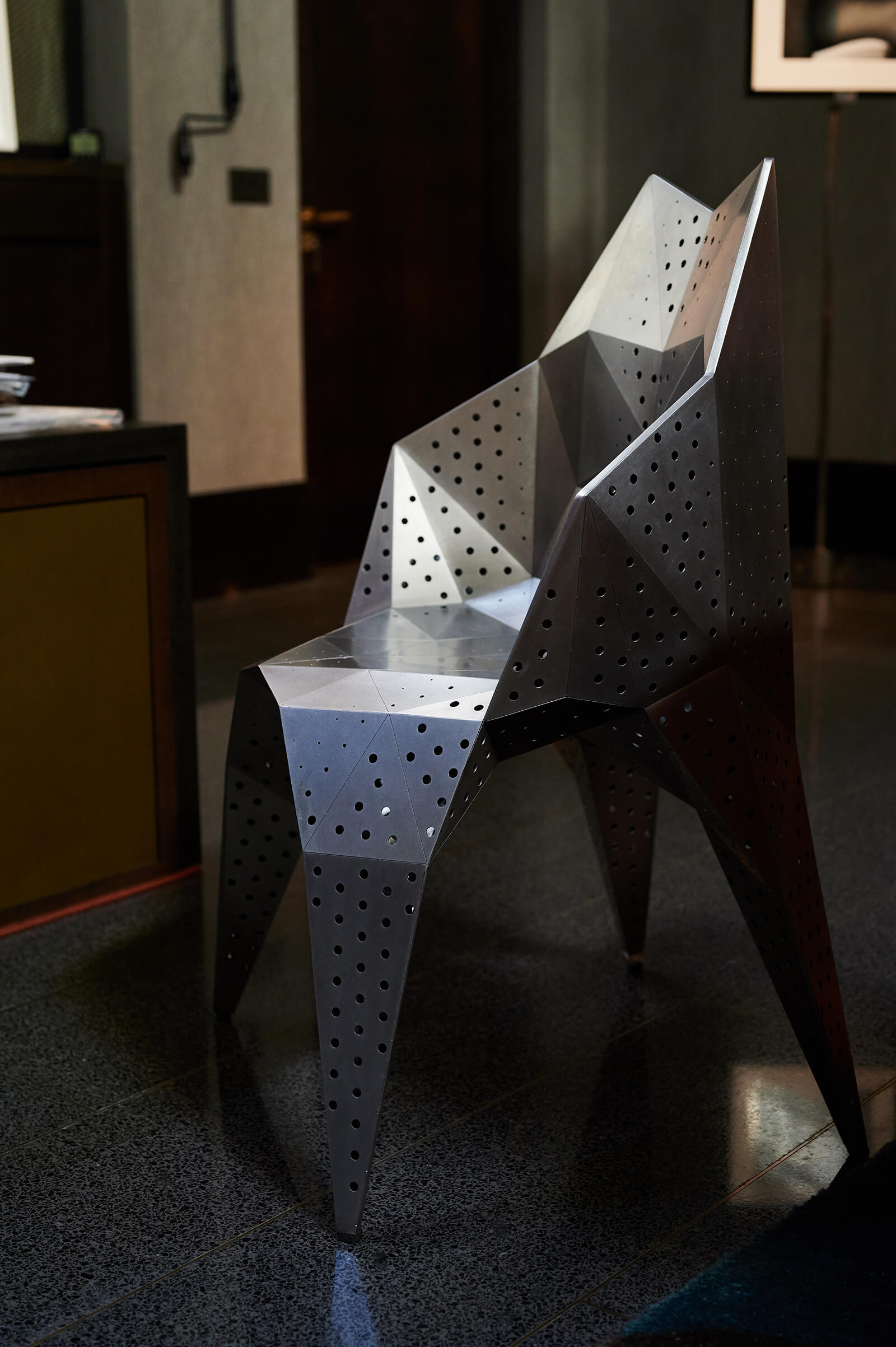
Zhoujie Zhang, ‘MC011-D-Matt’, 2018
PHOTOGRAPH: Sarah Weal
“… I like them because they are little unexpected in this environment where everything else is softer and older”
When did you get the Maarten Baas?
I have had that for about five years. I didn’t know very much about Maarten’s work until I saw this clock on a booth of Carpenters Workshop Gallery and I was enthralled by it. It is such a brilliantly simple idea and so well executed. It is a grandfather clock, with a little bell inside that rings the hours. I find myself sitting at my desk staring at it like an idiot. It is so well done, because the cycle he has filmed is more than twelve hours, so tomorrow at the same time he might have a cigarette in his mouth. There is nothing hurried about it, it is very gentle.
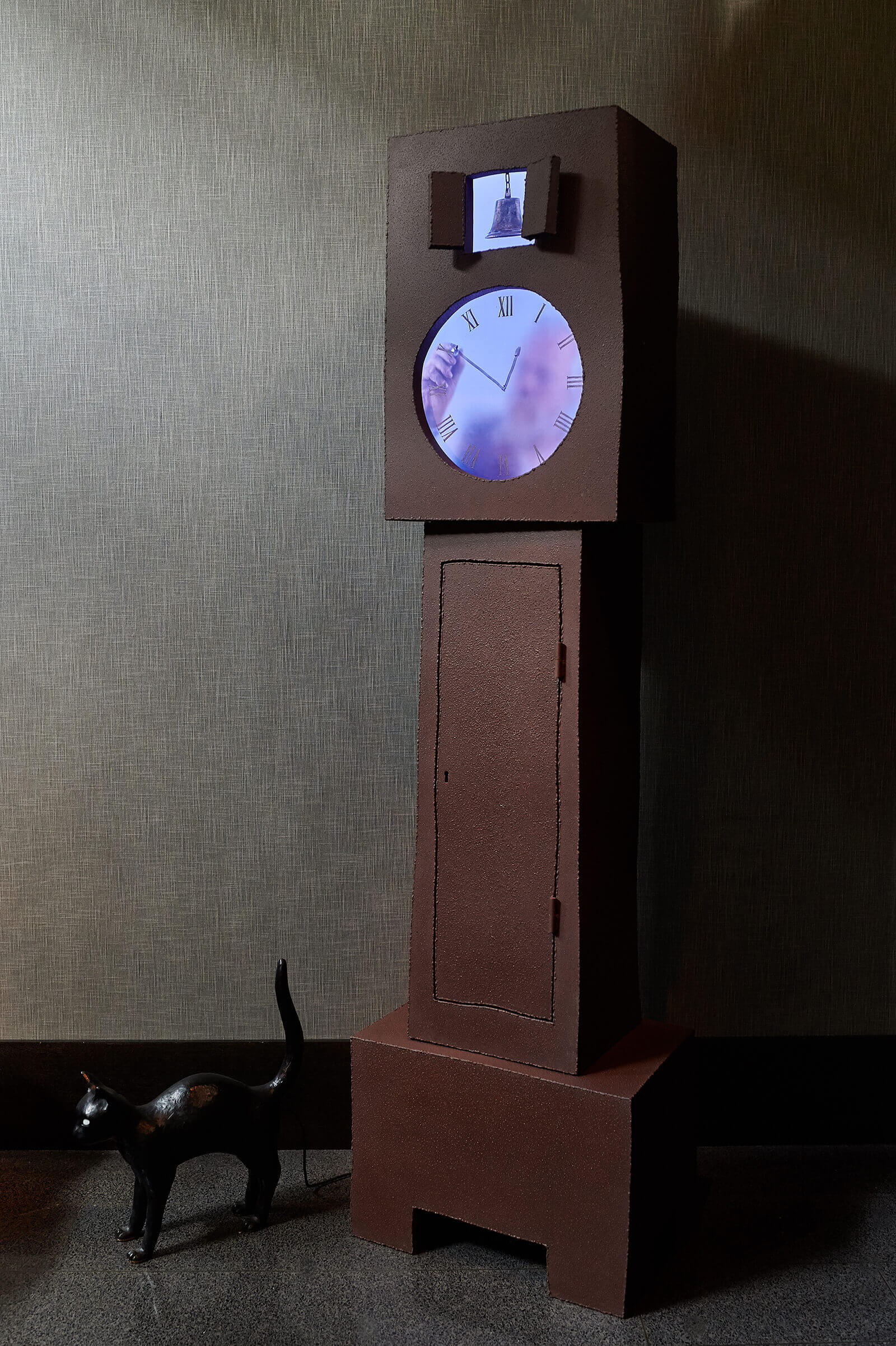
Maarten Baas, ‘Grandfather clock’, 2013
PHOTOGRAPH: Sarah Weal
These artworks are so strong it is quite tricky to know what to have as furniture or background …
If I had filled my office with furniture and design by Job it would have been way too much. It would have actually overshadowed whatever I put on the wall. There is some sort of skill in marrying all this together.
The feeling is like that of a Gentleman’s Club, or a really comfortable home, but with one or two serious design pieces – is that what you were trying to achieve?
The type of person that spends more than a $1m on a photograph is likely to have design, so a lot of my clients know what these pieces are, and that makes them feel comfortable. There is something quite intimidating for some people to come into a gallery. I wanted to create an environment where whoever you are, rich or poor, you come in and say, “Wow, this is beautiful”, and then are able to appreciate the art.
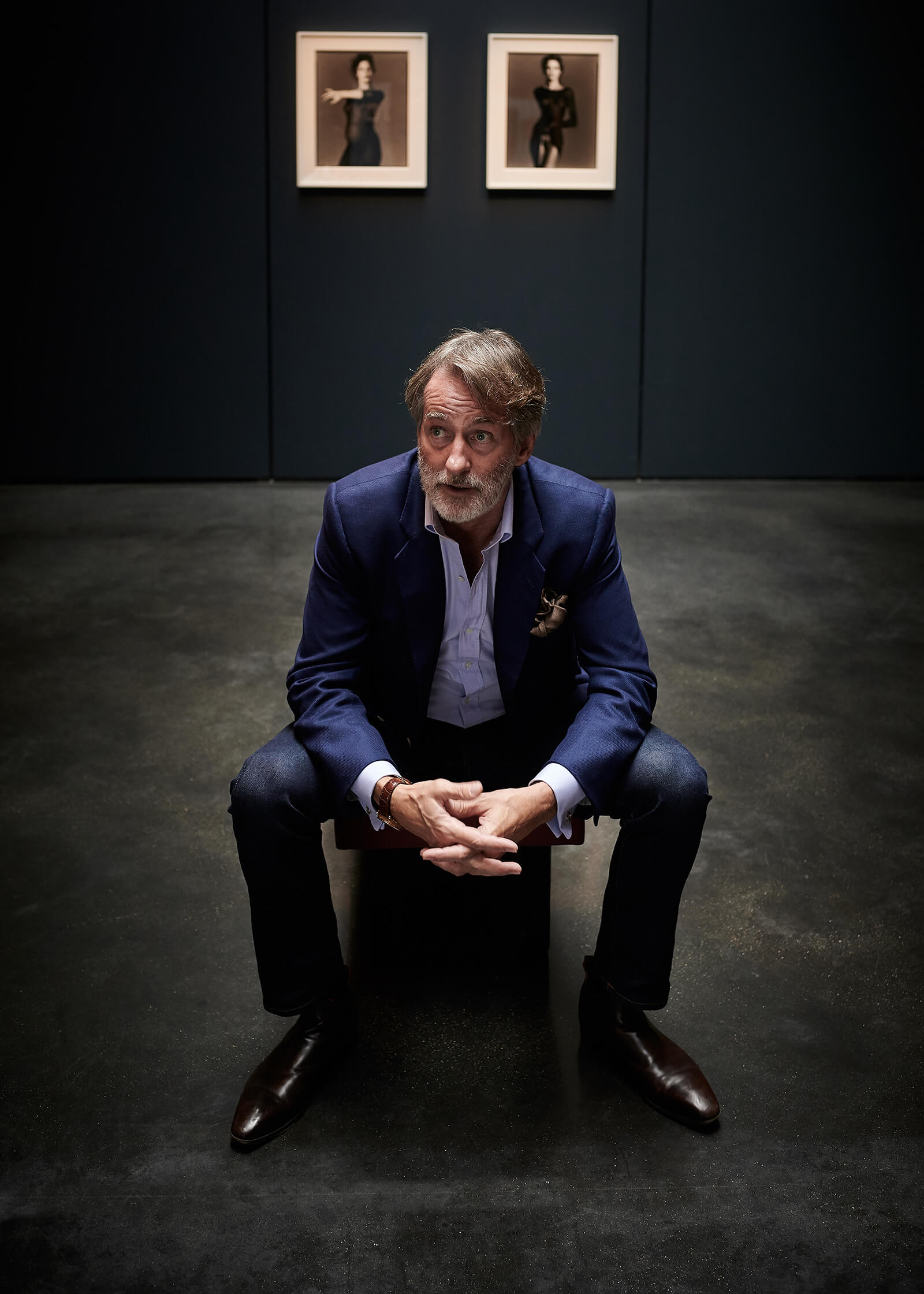
Tim Jefferies
PHOTOGRAPH: Sarah Weal
Hamiltons Gallery – one of the world’s leading galleries specialising in the modern masters of photography.
‘Mario Testino: East’ runs until the 18th January 2020.
